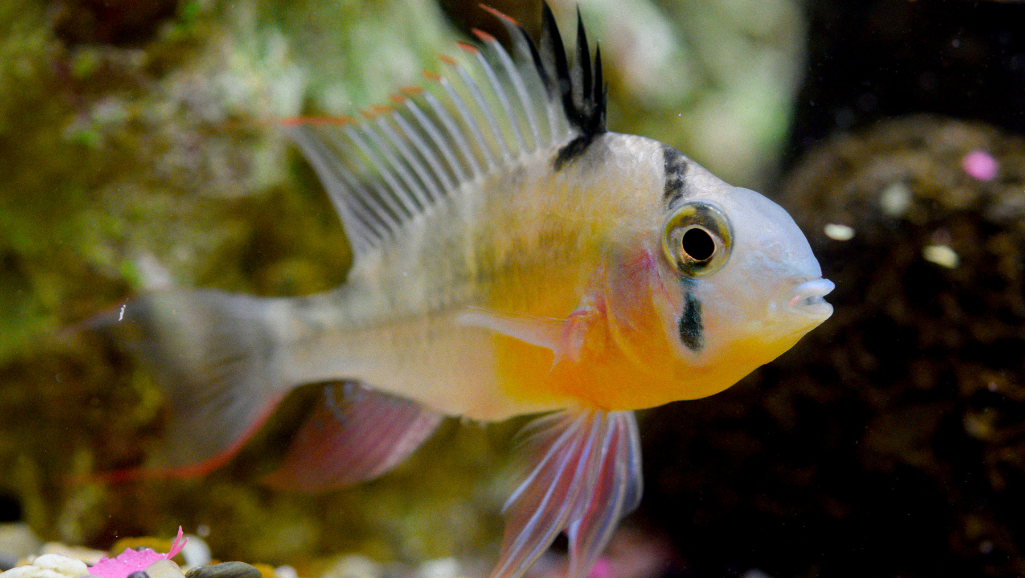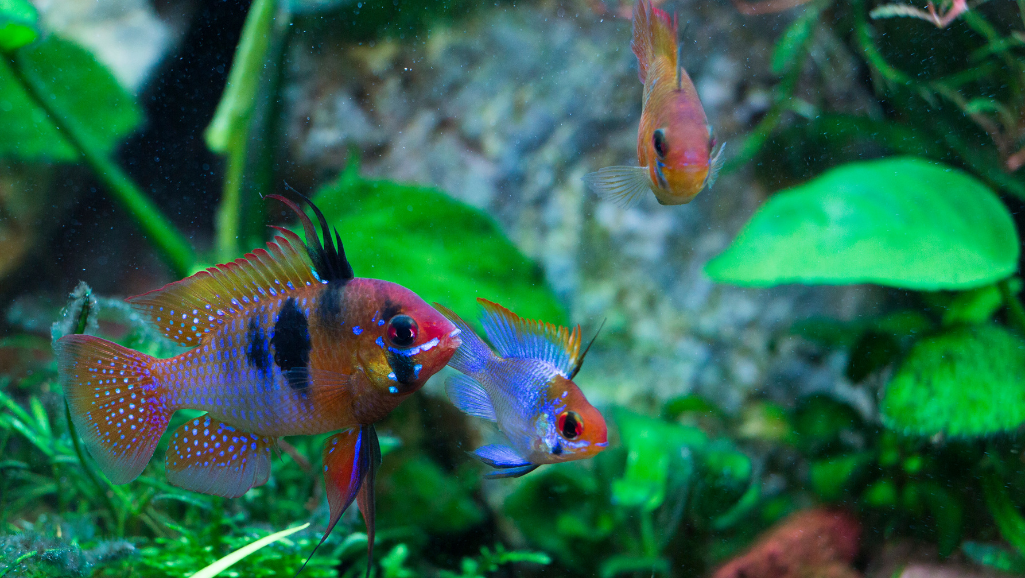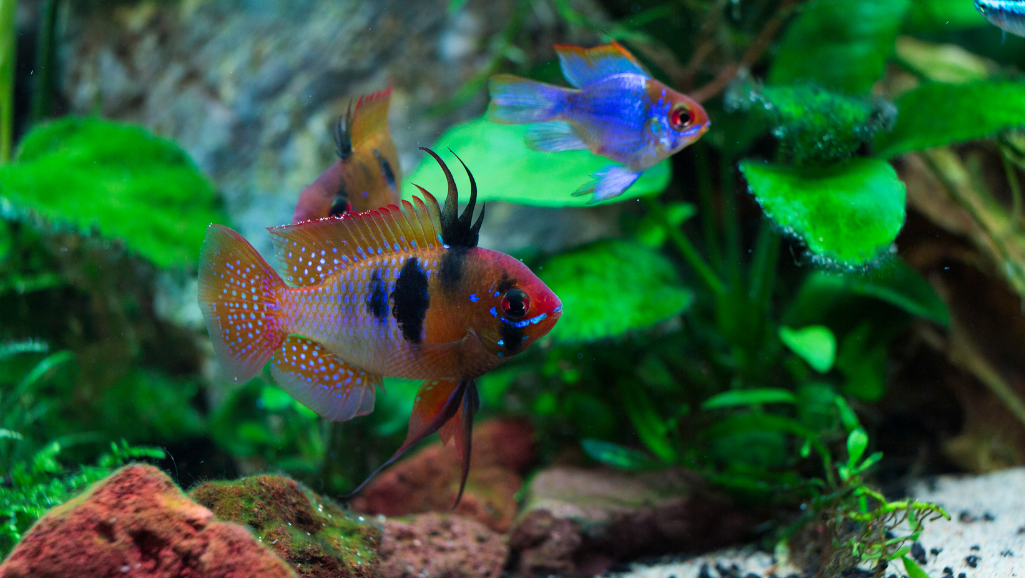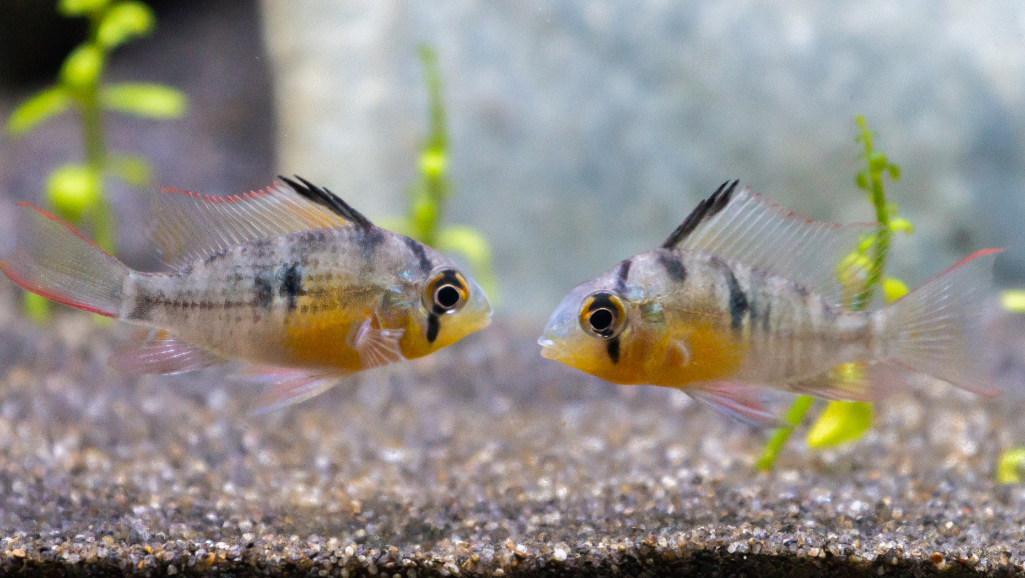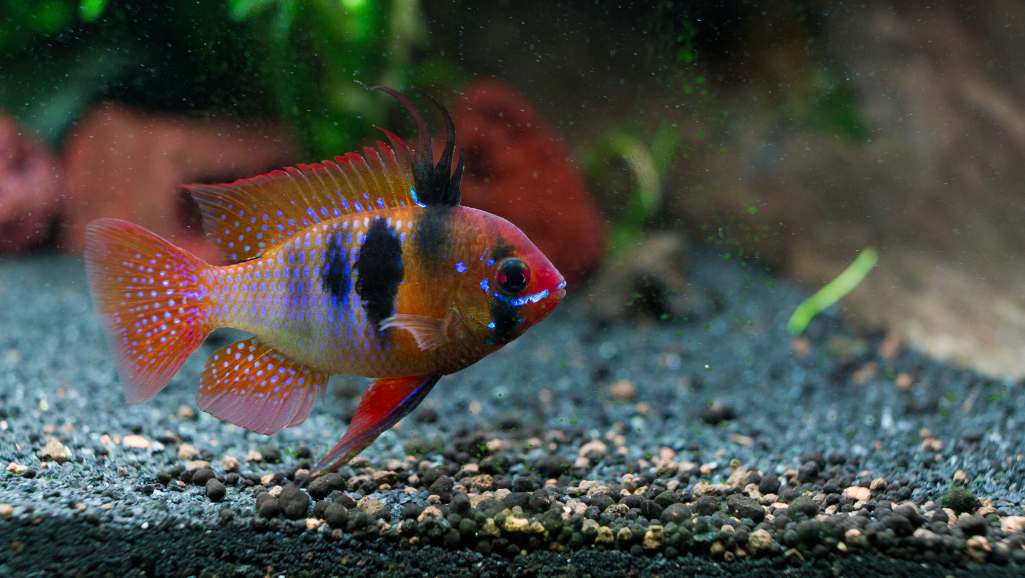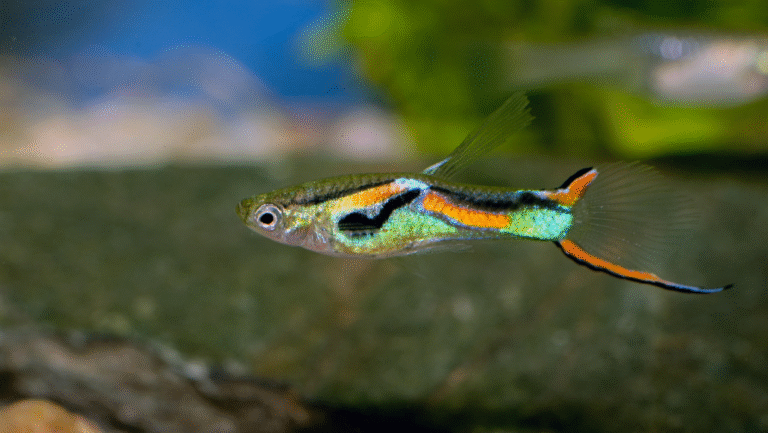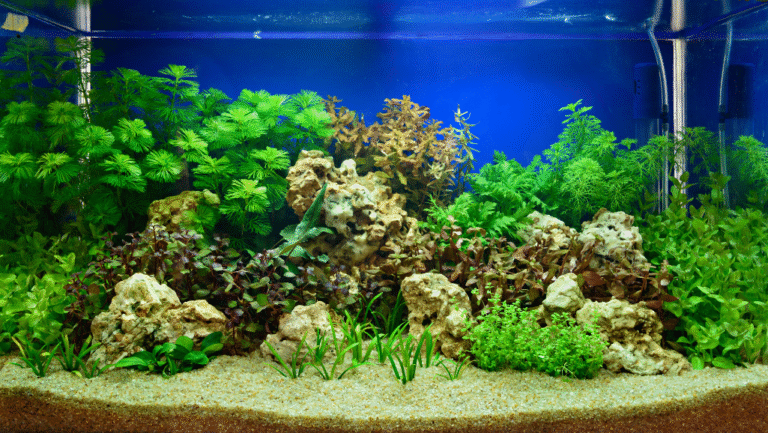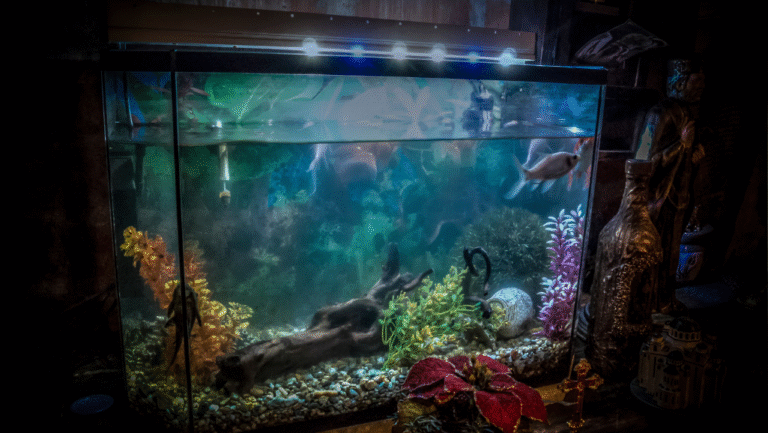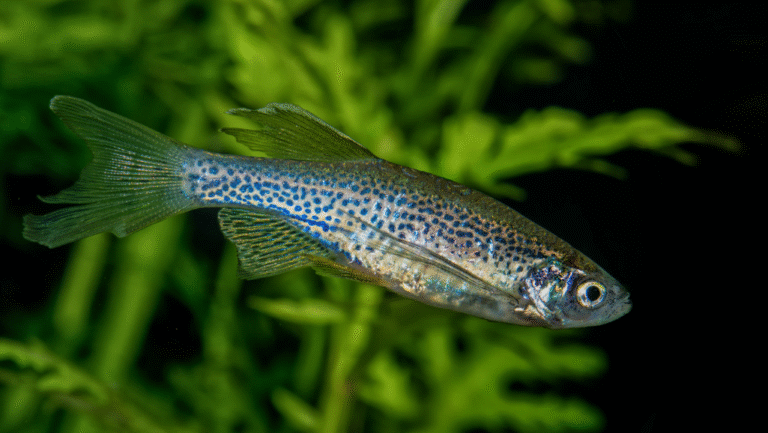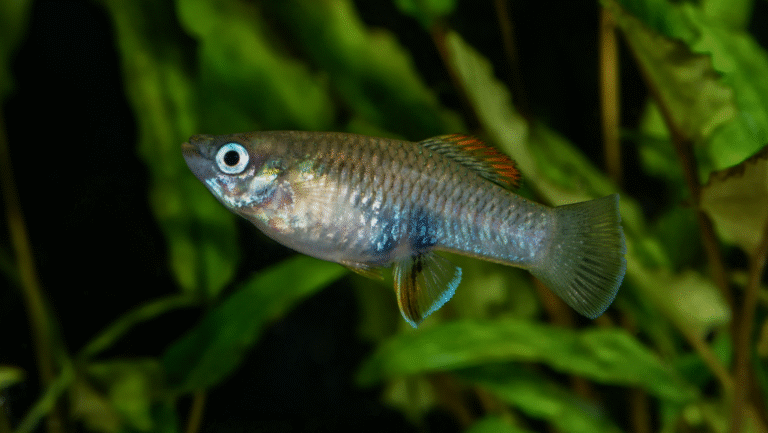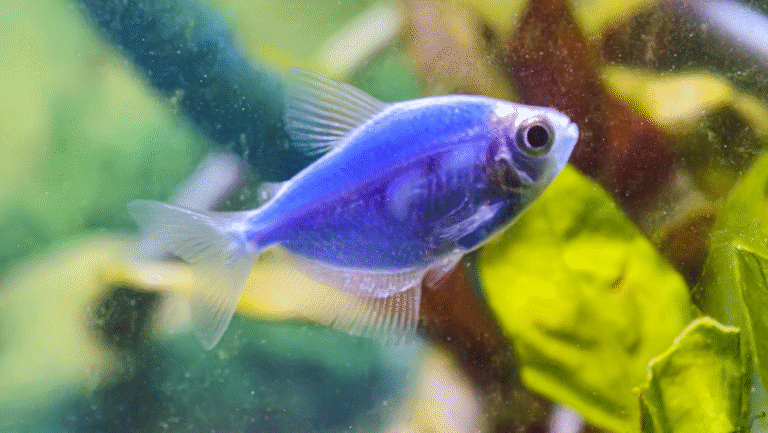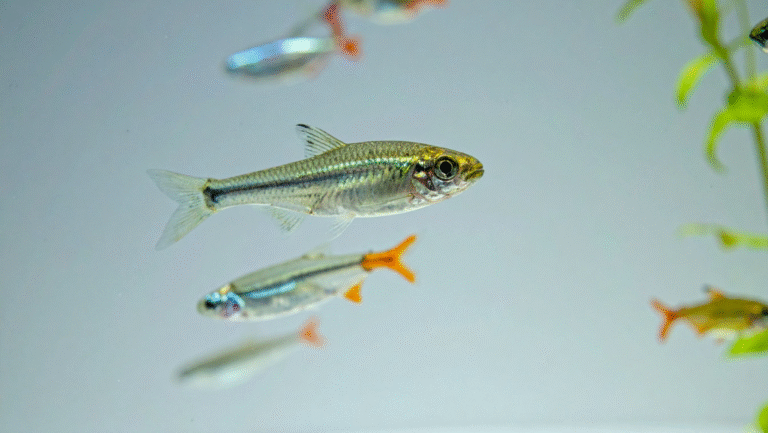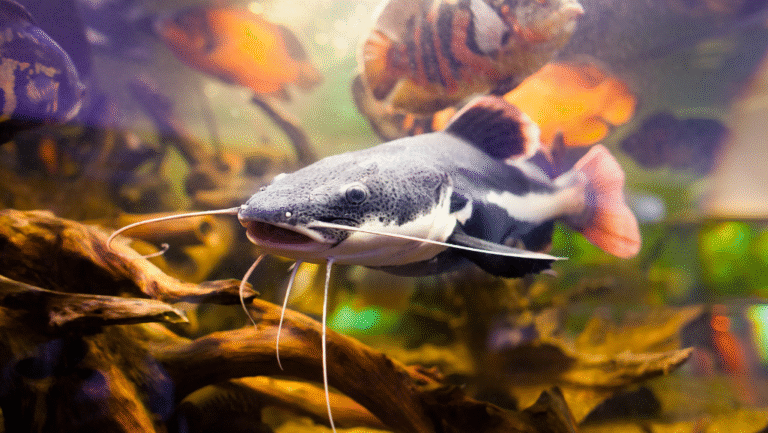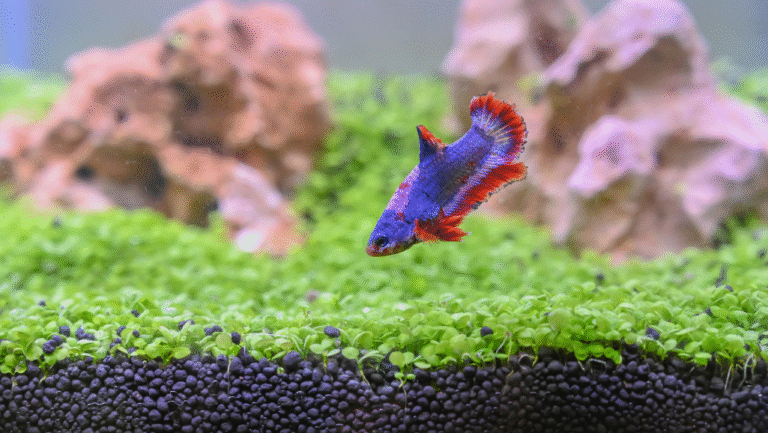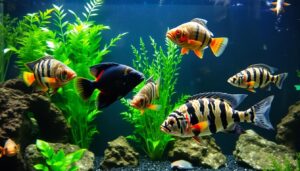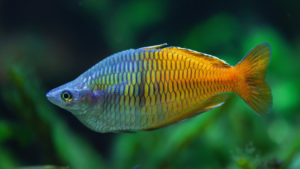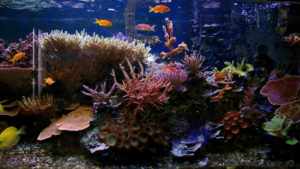Meet the bolivian ram, a graceful fish that blends calm temperament with striking color. Native to the upper Rio Madeira drainage in the amazon river basin, this species (Mikrogeophagus altispinosus) favors sandy margins and gentle flow. Its elongated body, pearly-blue highlights, and a bold mid-body spot invite close observation.
The fish reaches about 3 inches on average, with males sometimes nearing 3.5 inches. Notice the translucent fins edged in red and the elongated dorsal fin rays in males. These features make the cichlids rewarding for both beginners and seasoned keepers.
In an aquarium, simple design choices help them shine. Fine sand substrate, smooth stones, driftwood, and hardy aquatic plants like Java fern create a natural biotope. With steady water and a calm community, bolivian rams show confident foraging, bright colors, and engaging behavior that slow you down and invite watching.
Key Takeaways
- The bolivian ram is a peaceful, colorful fish ideal for thoughtful aquariums.
- Mikrogeophagus altispinosus typically grows to about 3 inches and shows sexual dimorphism.
- A biotope tank with fine sand, driftwood, and aquatic plants suits their natural habits.
- Keep water stable and gentle flow for best color and behavior.
- They are approachable for beginners but reward careful long-term care.
Bolivian Ram Care Basics (Mikrogeophagus altispinosus)
Start with the basics: this compact cichlid lives roughly four years under steady care. Typical size reaches about three inches, with males sometimes near 3.5 inches and showing longer anterior dorsal fin rays.
Quick facts: lifespan, size, temperament, and difficulty
Lifespan: ~4 years with good husbandry. Temperament: very peaceful; limited aggression only during breeding.
Identification and sexual dimorphism
This species has an elongated oval body, a black eye stripe and a bold mid-body spot. Fins are translucent with red edging and pearly blue highlights.
Males are slightly larger and slimmer. Females show a rounder belly and deepen yellow tones while guarding eggs. To form natural pairs, raise a small group of juveniles and let a compatible pair emerge.
“Stable water and gentle flow are the simplest keys to happy fish.”
- Keep water conditions steady: 72–79°F, pH 6.0–7.5, 0–10 dKH.
- Provide fine substrate, hiding spots, and hardy plants from the amazon river basin style.
- Feed varied foods in small portions and monitor for stress.
How to Set Up the Ideal Aquarium for Bolivian Rams
Choose a tank in the 20–30 gallon range. A 20-gallon start will house a small group, but 30 gallons gives extra open area for cruising and reduces stress.
Lay out the space with an uncluttered center and cover along the back and sides. Add caves or faux-rock shelters sized so the largest fish can pass easily in inches.
Water and filtration
Dial in water conditions near 72–79°F, pH 6.0–7.5, and 0–10 dKH. Use a reliable filtration system and moderate the outflow to keep the current gentle.
“Stable water and regular water changes protect color, appetite, and long-term health.”
Substrate, hardscape, and plants
Use fine sand as the substrate so these fish can sift naturally. Stage smooth stones and driftwood to mirror the amazon river basin margins.
- Plant choices: Java fern, Amazon swords, Anubias, Vallisneria, and Java moss.
- Provide shaded zones to lower startle responses and encourage bold behavior.
- Keep filtration steady and schedule regular water changes to minimize nitrate.
Feeding, Behavior, and Tank Mates for a Peaceful Community
A clear feeding plan makes daily care simple and keeps the community calm. Build a daily routine around high-quality sinking pellets and quality flakes. Supplement with live or frozen brine shrimp and finely chopped earthworms to add protein and color.
Feed small portions two to three times daily, letting fish finish meals in a couple of minutes. This prevents excess food from fouling the water and keeps water conditions stable.
Temperament and signature behaviors
These dwarf cichlids are peaceful and curious. Watch for the signature “dart and sift”—they zip forward, pause, and sift substrate gently while foraging.
They rarely fight except when breeding, when mild territorial displays may appear. Stable water and regular meals reduce stress and encourage natural activity.
Choosing tank mates
Pick similarly sized, calm fish such as small characins and peaceful tetras. Avoid aggressive species and very tiny fish that may be seen as prey.
- Stocking tip: Keep pairs or small groups (4–8) to boost confidence and natural social behavior.
- Maintain line-of-sight breaks with plants or rocks to reduce tension.
- Adjust meal size or flow if any fish seem withdrawn; small tweaks restore balance quickly.
“Variety in food and steady conditions bring out the best color, posture, and behavior in your community.”
Bolivian Ram Breeding: Step-by-Step
Breeding these peaceful cichlids is rewarding. Begin by raising a small group of 5–8 juveniles and let a compatible pair form naturally. The male is usually slightly larger and slimmer with longer anterior dorsal fin rays, while the female has a rounder belly.
Spawning setup
Prepare a roomy tank with an open central area, flat stones, caves, and a soft sand substrate. Keep lighting dim and temperature around the high 70s°F. Use gentle filtration and shaded cover so the pair feels secure enough to lay eggs.
Eggs, hatching timeline, and early care
Courtship includes cleaning a stone and sometimes digging small sand pits. The female will lay ovoid light-gray eggs in batches while the male fertilizes them externally. Expect most eggs to hatch in about two days, though warmer water shortens that time.
Fry and parental behavior
Parents actively guard and fan the clutch with their fins. Larvae may move to pits the pair prepared in the substrate. Free swimming arrives around 5–8 days.
Fry feeding and troubleshooting
Offer newly hatched Artemia and microworms in tiny, frequent feedings. Maintain near-pristine water with matched water changes; young fry are nitrate sensitive. If parents eat eggs or show aggressive stress, be ready to separate them to save the brood.
“Patience and clean water are the two simplest keys to reliable eggs and healthy fry.”
- Form a natural pair: raise a small group and observe for bonding.
- Spawn area: flat stones, sand pits, caves, gentle flow, and warm temperature.
- Fry care: hatch at ~2 days, free swim by week’s end, feed Artemia.
- When to step in: persistent egg loss or parent aggression calls for intervention.
Conclusion
Consistent care brings steady rewards for keepers of these graceful cichlids. Keep water conditions steady—72–79°F, pH 6.0–7.5, and low nitrates—to lower stress and show best color. Small, regular steps in routine save time and trouble.
Set up a 20–30 gallon tank with fine sand, flat stones, and plants like Java fern, Amazon swords, and Anubias. Feed varied food: sinking pellets, quality flakes, and occasional brine shrimp or chopped earthworms. Choose calm tank mates that match size and temperament.
For breeders, provide flat stones, caves, and gentle flow; eggs hatch in about 2–3 days and fry free swim in roughly a week. With patient, attentive care your bolivian ram pair and community fish will repay you with quiet, everyday moments of wonder.
